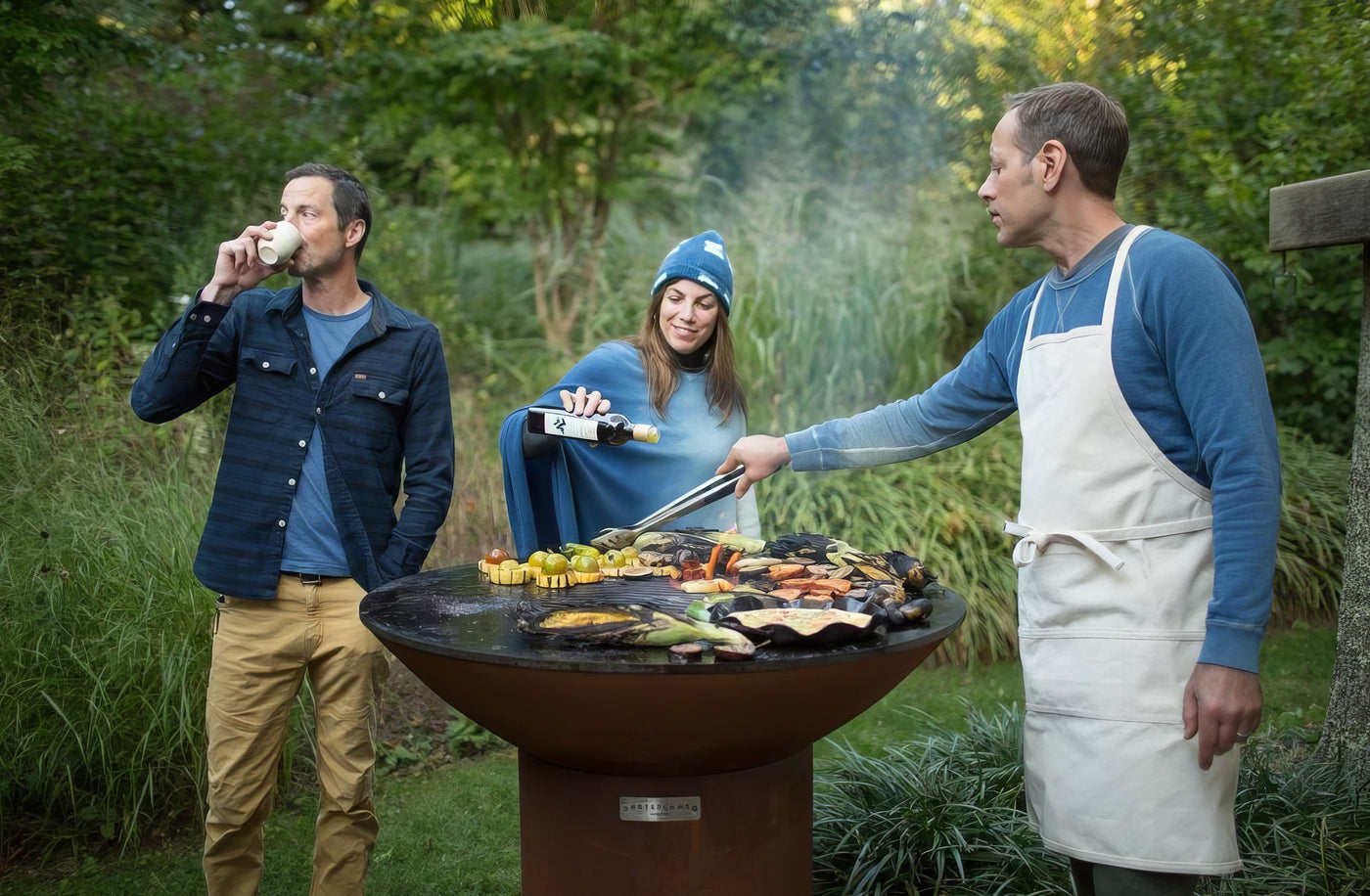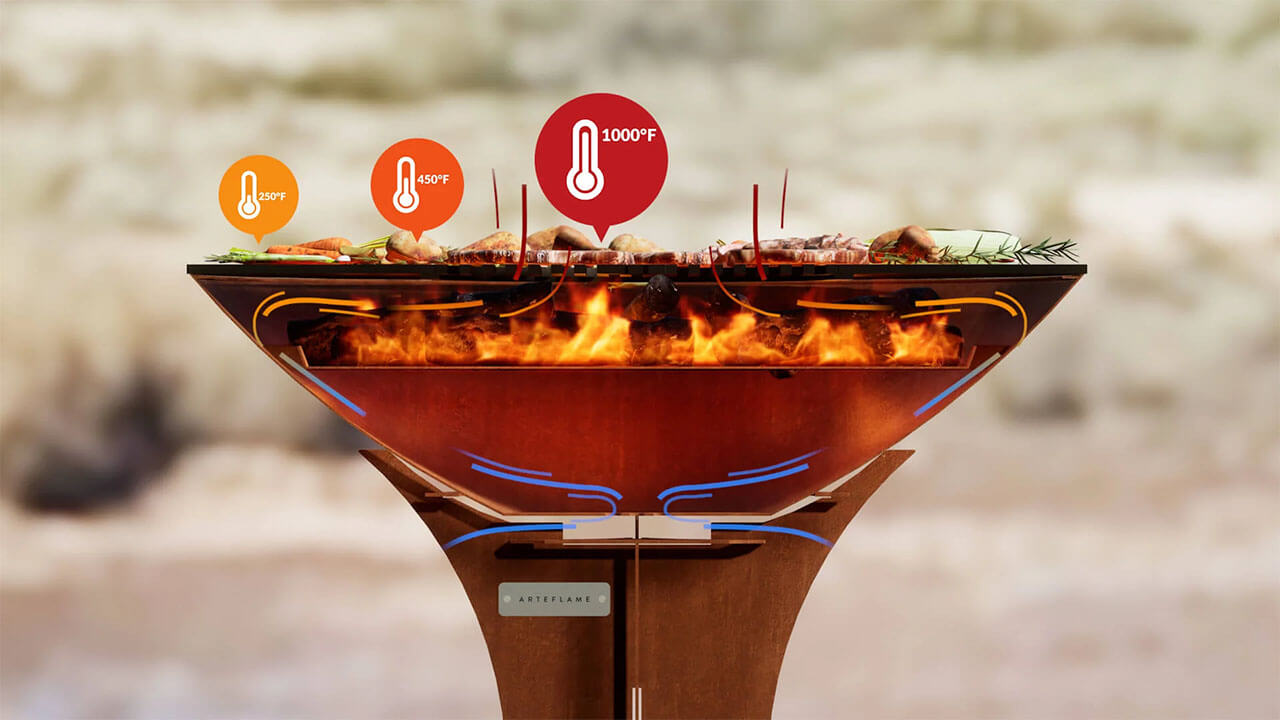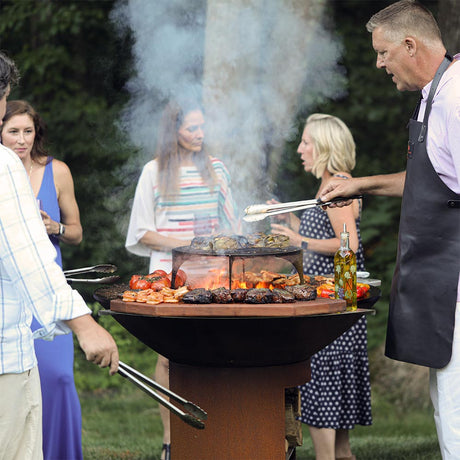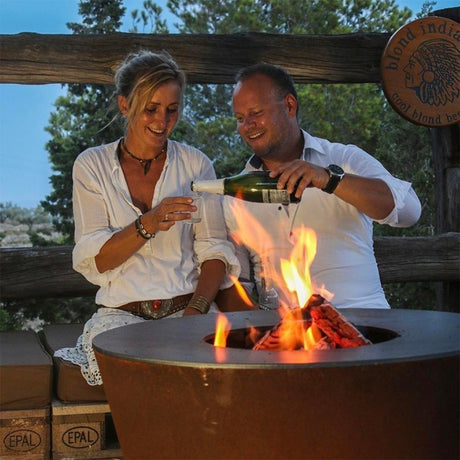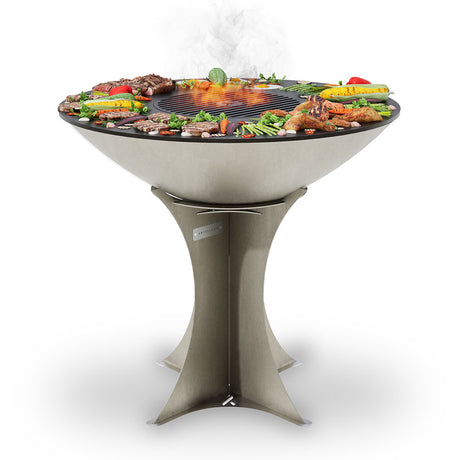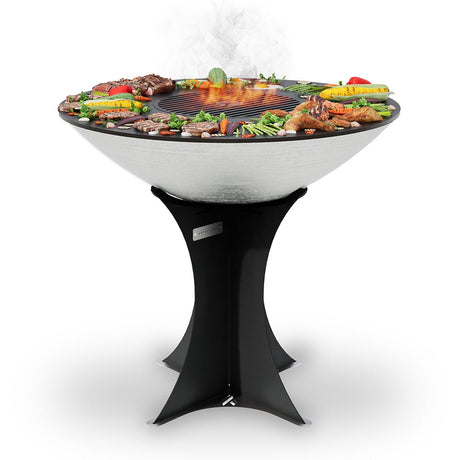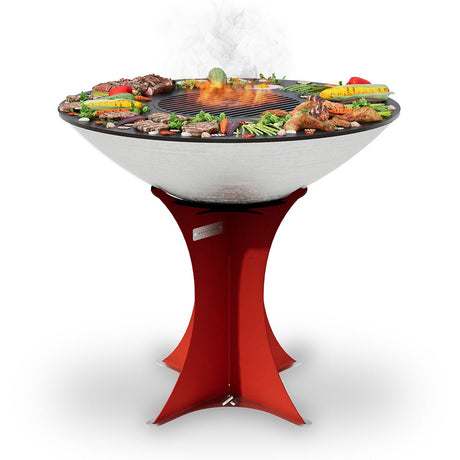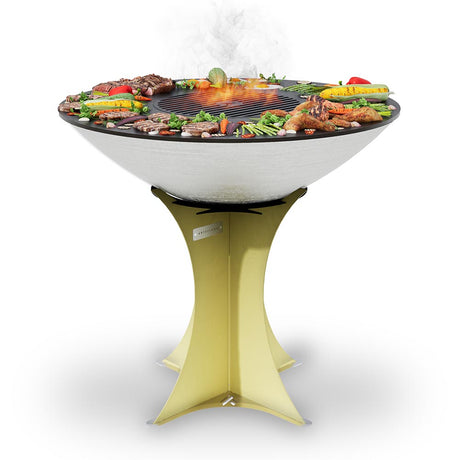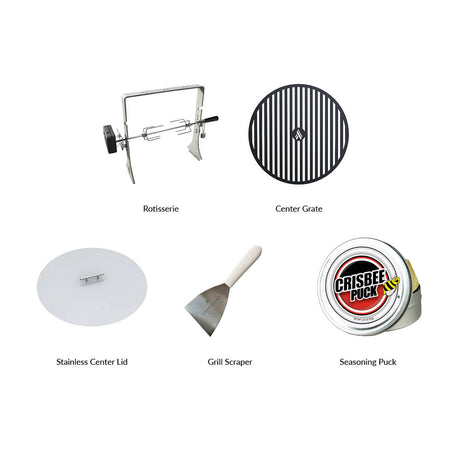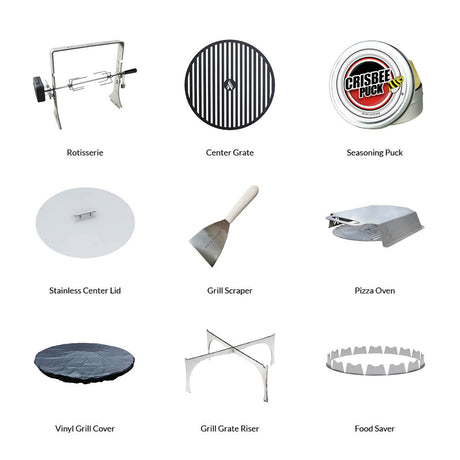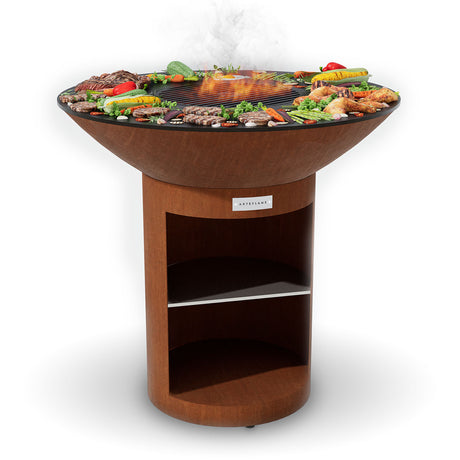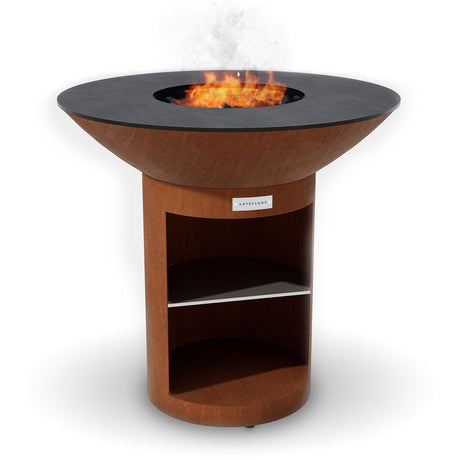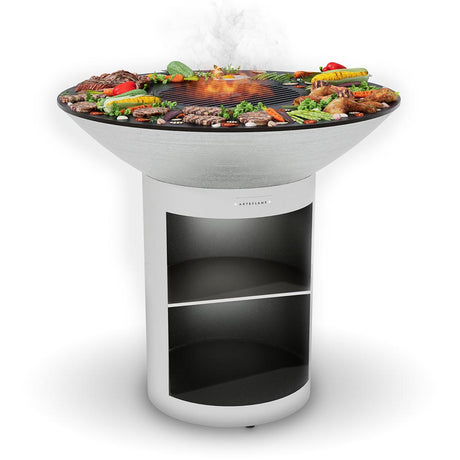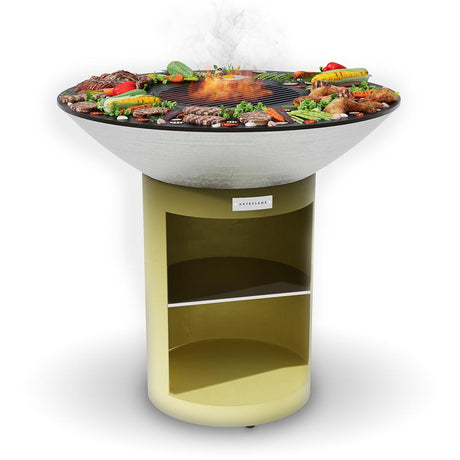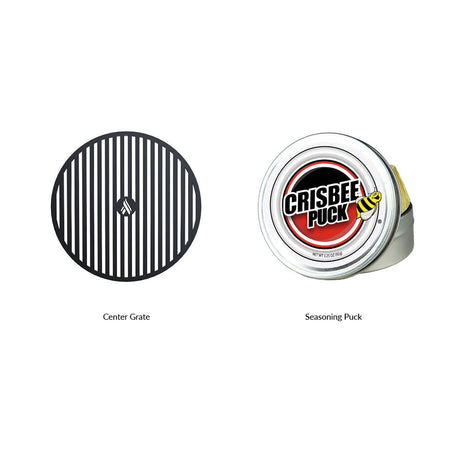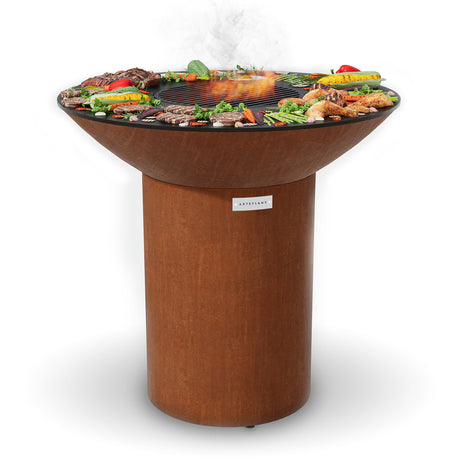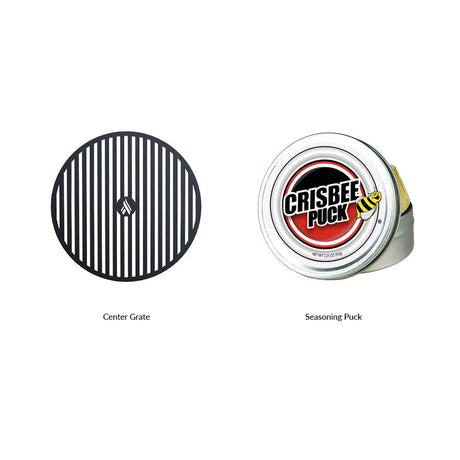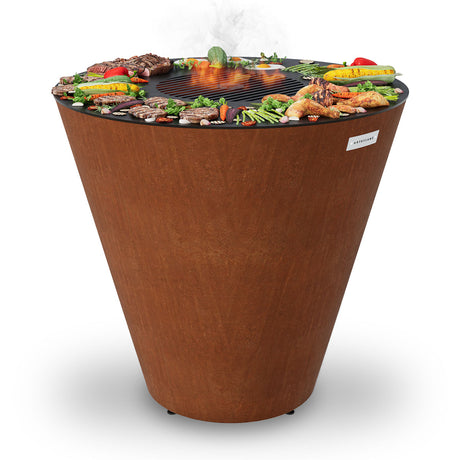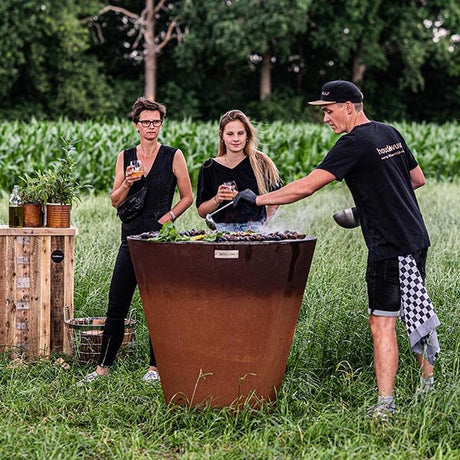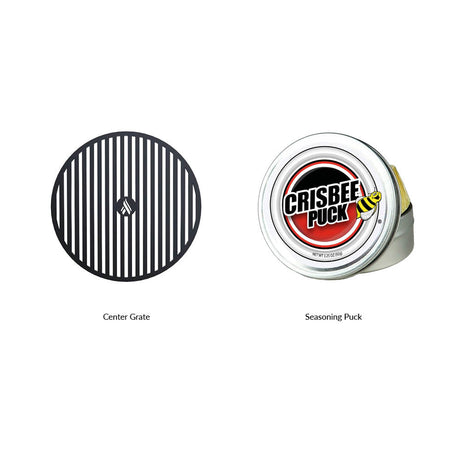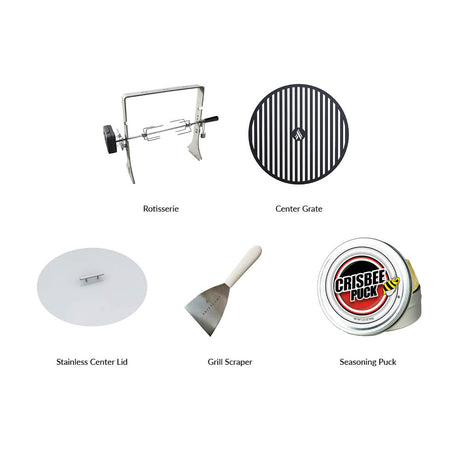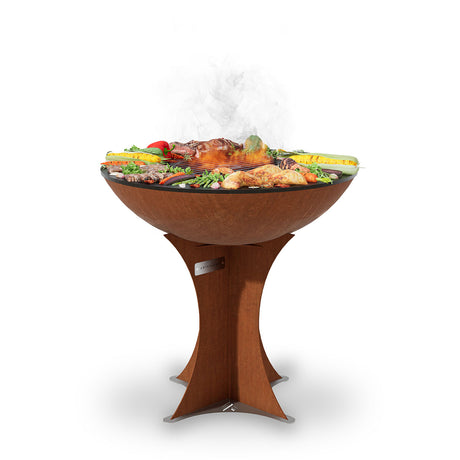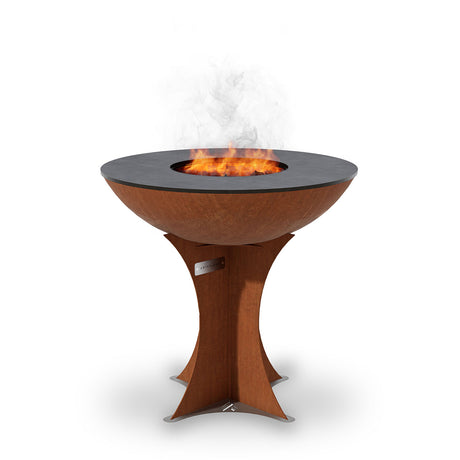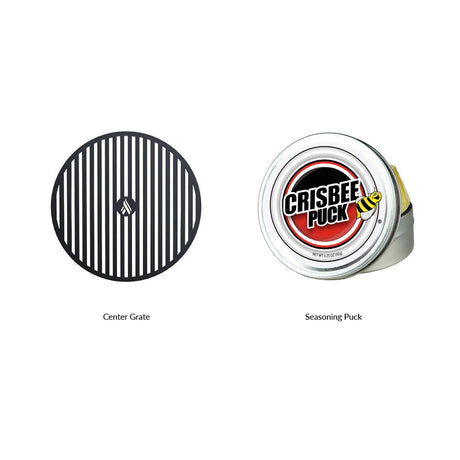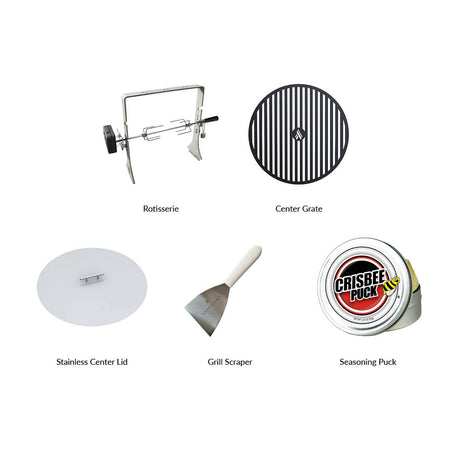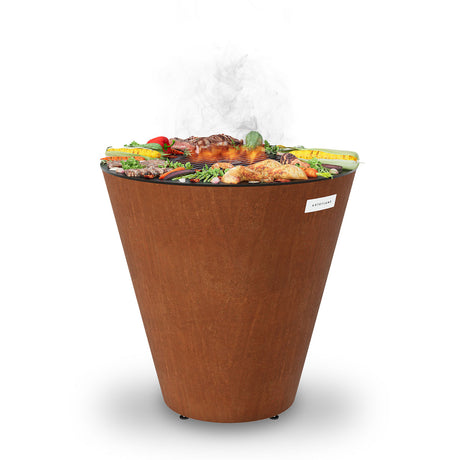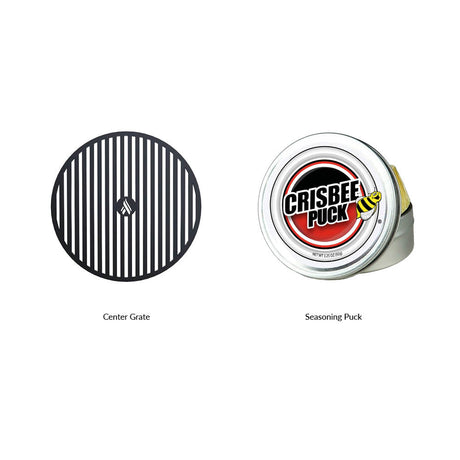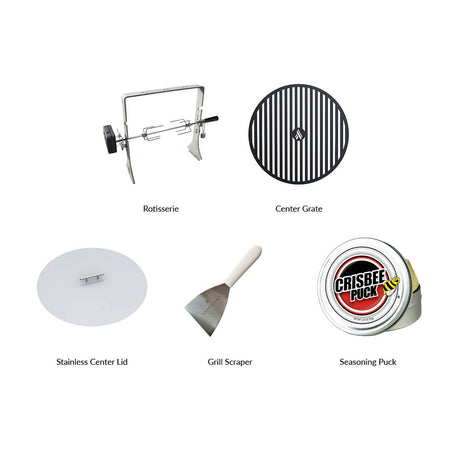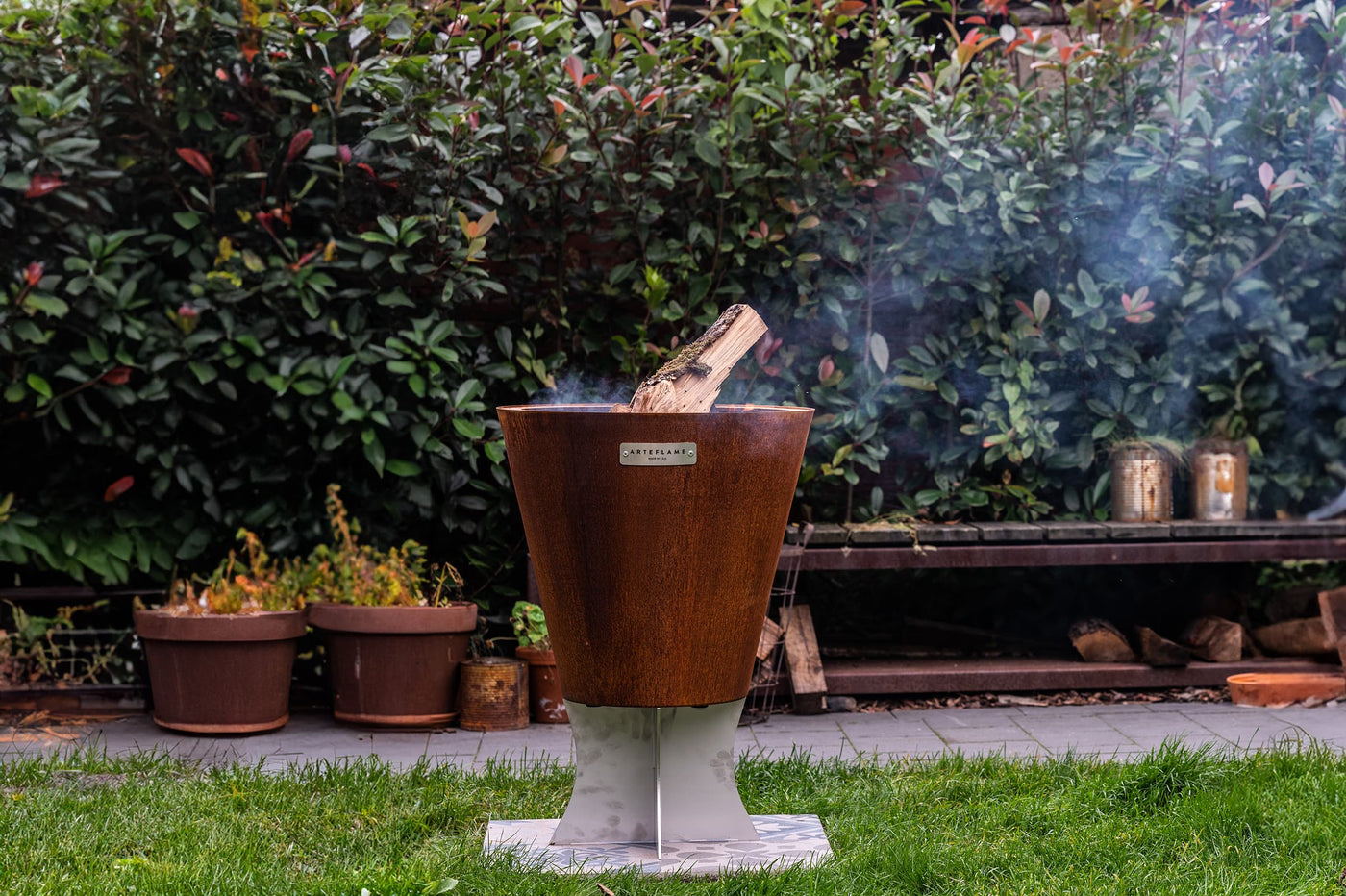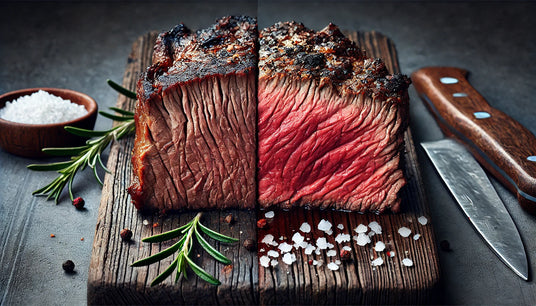
CUAL ES MEJOR?
Para los amantes de los filetes, elegir la parrilla adecuada es la base de una experiencia de asado excepcional. ¿La primera gran decisión? ¿Leña o carbón versus gas? Esta elección define no solo el sabor de la comida, sino también el nivel de control y artesanía que le aportas a la parrilla. Exploremos por qué las parrillas de leña y carbón son únicas para quienes anhelan la perfección.
Las parrillas de leña y carbón transforman la preparación de la carne en una forma de arte, infundiendo a sus filetes sabores intensos y ahumados que las parrillas a gas simplemente no pueden reproducir. El aroma y el sabor creados por la leña real o el carbón elevan sus comidas al nivel gourmet, brindando una profundidad de sabor incomparable. Más allá del sabor, estas parrillas ofrecen un control superior sobre la temperatura, lo que le permite ajustar el calor para cada ingrediente. Esta precisión garantiza que cada filete esté sellado, cocinado y servido a la perfección, convirtiendo cada bocado en una obra maestra. Si asar a la parrilla es su pasión, nada supera la autenticidad y el rendimiento de una parrilla de leña o carbón.
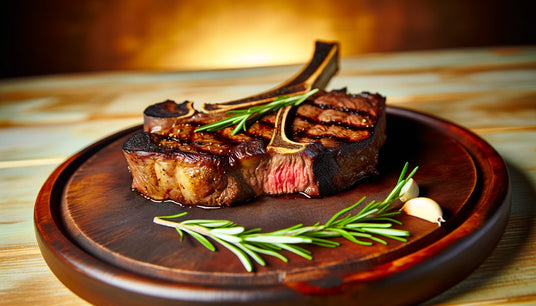
WHY IS A GREAT SEAR IMPORTANT?
When proteins and carbohydrates (sugars) are heated together, the Maillard reaction occurs, which is essential for developing rich and complex flavors in food.
Steakhouses sear over wood at 1,000°F to properly sear the food and enhance its flavor. Arteflame Grills excel at reaching these high temperatures and are perfect for achieving that coveted sear. The intense heat generated by wood or charcoal creates a beautifully caramelized crust on the food, resulting in a more enjoyable dining experience.
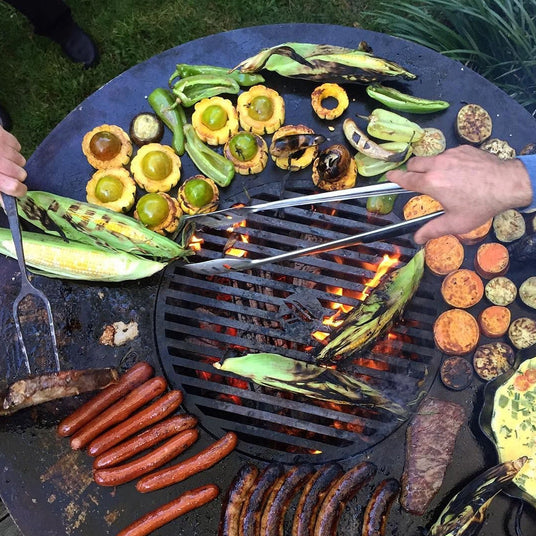
convenience and ease of use
On the other hand, gas grills provide convenience and ease of use. These grills come with adjustable burners that enable temperature control with a simple turn of a knob. Unlike wood grills, there's no need to wait for charcoal to ignite and reach the desired temperature. With a gas grill, you can start cooking immediately. Additionally, gas grills are easier to clean but do require much more maintenance compared to their wood counterparts. Arteflame grills use no valves, switches or gimmicks of any kind that can break.
To summarize, wood grills excel in the realm of flavor, infusing your food with an unrivaled smoky taste that delights the palate. The use of wood or charcoal provides much higher temperatures, ensuring perfect cooking results. On the other hand, gas grills offer convenience.
Armed with a thorough understanding of the benefits associated with both wood and gas grills, you're now equipped to make an informed decision. Consider your personal preferences, cooking style, and the overall grilling experience you desire. Ultimately, the choice between wood/charcoal and gas grills will depend on your specific needs and desires.

SABOR A GAS VS SABOR A FUEGO DE LEÑA
¿Está cansado de sacrificar el sabor de sus alimentos a la parrilla? ¡No busque más! La solución a su problema está en optar por una parrilla a leña. Es hora de llevar su experiencia de asado al siguiente nivel y disfrutar del exquisito sabor que solo una parrilla a leña puede brindar.
Seamos honestos, la principal razón por la que la gente prefiere asar a la parrilla en lugar de otros métodos de cocción es el sabor inigualable que le da a la comida. Y cuando se trata de sabor, asar a la parrilla con leña es único. El sabor único que una parrilla de leña le agrega a la comida simplemente no se puede reproducir en ningún otro lugar.
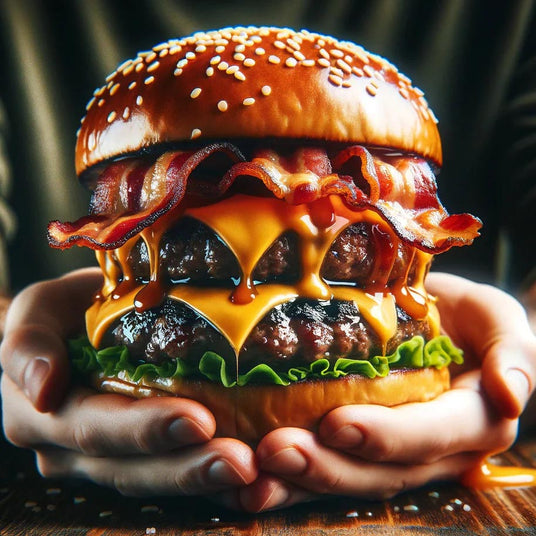
gas grills heat food indirectly
Gas grills heat food indirectly and are not well-suited for proper searing as they typically don't reach the high temperatures required. Although some high-end gas grills have sear burners, they are often small and limited in their capacity.
For those looking to truly indulge in the taste of barbecued food, charcoal and wood grills are the superior choice. The combination of their intense heat and the Maillard reaction guarantees a more flavorful and satisfying meal. So, if taste is your priority, opting for a charcoal or wood-fired grill is the way to go.

taste of wood-fired grilled food
Por qué los alimentos a la parrilla con leña se destacan del resto
¿Qué hace que la comida a la parrilla con leña sea tan excepcional? Se reduce a dos elementos clave: el dorado y el sabor ahumado. El dorado retiene los jugos y crea una corteza caramelizada y sabrosa que realza tanto la textura como el sabor. Mientras tanto, el aroma natural del humo de la leña impregna la comida, dándole ese irresistible sabor ahumado que tanto anhelas, un sabor que ninguna parrilla a gas puede reproducir.
Hablando de parrillas a gas, considere esto: el propano o el gas natural que las alimenta es el mismo que se usa en los autobuses urbanos. ¿De verdad quiere que su comida quede expuesta a los humos del escape de un autobús? Ese no es precisamente el sabor que desearía para su próxima parrillada.
Si está listo para mejorar su parrillada, es hora de cambiar a una parrilla a leña. Dígale adiós a los compromisos y hola a un sabor inigualable. Con una parrilla a leña, cada bocado es una aventura de perfección ahumada y caramelizada. ¡Haga el cambio hoy mismo, sus papilas gustativas se lo agradecerán!
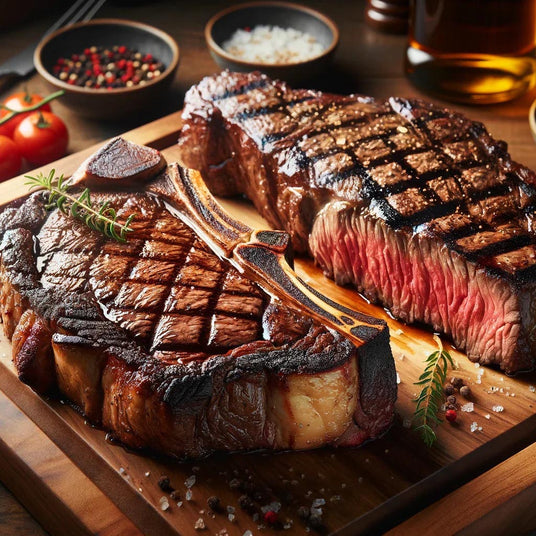
LA CLAVE PARA EXCELENTES FILETES
Cuando se trata de lograr un dorado perfecto de la carne, es importante comprender las limitaciones de la mayoría de las parrillas a gas. Si bien estas parrillas pueden "dorar" la superficie de los alimentos, a menudo tienen dificultades para alcanzar las altas temperaturas necesarias para un dorado óptimo.
El proceso de dorado, conocido como reacción de Maillard, comienza alrededor de los 350 °F. Sin embargo, para lograr los mejores resultados, la temperatura debe superar los 500 °F. Desafortunadamente, asar a la parrilla a una temperatura más baja da como resultado una cocción excesiva del interior de la carne, ya que el proceso de dorado tarda demasiado en producirse.
Lo que diferencia el dorado simple del dorado simple es la deshidratación de la superficie y la textura crujiente que le otorga a los alimentos. Esto crea un contraste deseable en la textura entre la corteza exterior y el interior tierno. Los asadores doran sus alimentos a 1000 °F; si desea calidad de asador, necesita temperaturas de asador.

alcanzar temperaturas superiores a 1,000 °F
A la hora de dorar, es fundamental contar con una parrilla a carbón o a leña. Pocas parrillas pueden alcanzar temperaturas superiores a los 1000 °F, lo que proporciona el calor intenso necesario para lograr ese ansiado dorado.
Si busca una parrilla versátil que selle a altas temperaturas y ofrezca la comodidad y facilidad de una parrilla a gas, no busque más que la Arteflame. Esta innovadora parrilla combina lo mejor de ambos mundos y logra temperaturas de cocción ideales para asados que superan incluso las de las parrillas de carbón tradicionales.
Por lo tanto, si bien la mayoría de las parrillas a gas son capaces de dorar los alimentos, alcanzar las temperaturas necesarias para que queden bien dorados es un desafío. Para quienes buscan la mejor experiencia de cocción, se recomienda una parrilla a carbón o a leña.
Arteflame XXL 40" Grills
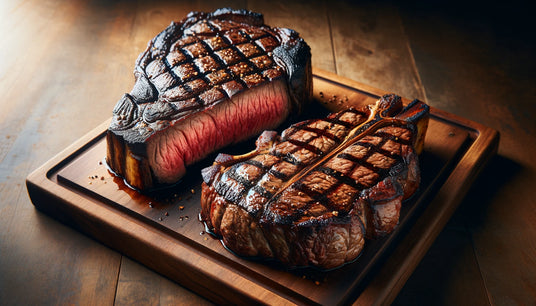
HIGH TEMPERATURE SEARING
FOR STEAKHOUSE QUALITY STEAKS
Steak aficionados, listen up! When it comes to achieving that perfect sear on your favorite cut of meat, the choice of equipment is vital. Steak restaurants rely on gas broilers capable of reaching scorching temperatures of 800°F - 1200°F or, even better, grill over a wood fire at these same temperatures.
To truly replicate the mouthwatering sear commonly found in steakhouses, it is essential to ensure that your gas grill can reach a minimum temperature of 800°F++. However, it's important to note that gas grills meeting these temperature criteria are relatively rare.
In contrast, Arteflame grills are known for their ability to generate intense heat, exceeding 1,000°F. These high temperatures are precisely what you need to create that sought-after edge-to-edge sear on your steak. So, if achieving a seared masterpiece is your goal, an Arteflame grill may be the ideal choice for you.
Remember, when it comes to grilling perfection, don't settle for anything less than the optimal temperature range. Whether you opt for a gas grill that can reach these high temperatures or choose the reliability of an Arteflame, the key is to ensure that your grilling equipment can deliver the intense heat required for a flawlessly seared steak.
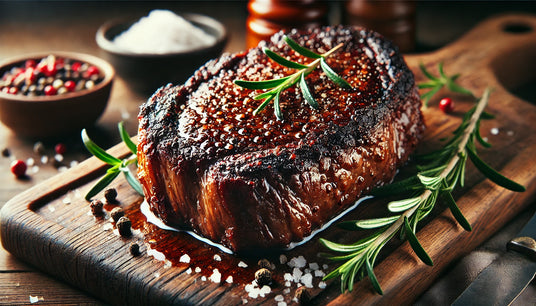
SEARING VS BROWNING,
WHAT'S THE DIFFERENCE?
Dorar es una técnica culinaria que, cuando se ejecuta con precisión, transforma los platos al realzar el sabor y la textura. Lograr un dorado exterior hermoso y mantener el punto de cocción interior ideal requiere habilidad y conocimiento. La parrilla Arteflame se destaca en este proceso, ya que ofrece un calor intenso para dorar de manera rápida y uniforme, perfecto para cortes tiernos como filetes y chuletas, y deja una corteza deliciosa y un interior jugoso.
Para cortes más duros como la pechuga, el método de sellado inverso es invaluable. Esta técnica eleva suavemente la temperatura interna a fuego lento antes de terminar con un sellado a fuego alto, lo que garantiza la ternura y el sabor en todo momento.
Dominar el dorado de los alimentos desata una sinfonía de sabores intensos que convierten cualquier plato en una experiencia gourmet. Ya sea para dorar filetes a la perfección o para transformar la pechuga en un tierno manjar, el dorado de los alimentos es una habilidad esencial para cualquier entusiasta culinario. Con la práctica, este arte revela todo el potencial de los ingredientes y lleva cada comida a cotas incomparables.
ARTEFLAME XL 30" GRILLS
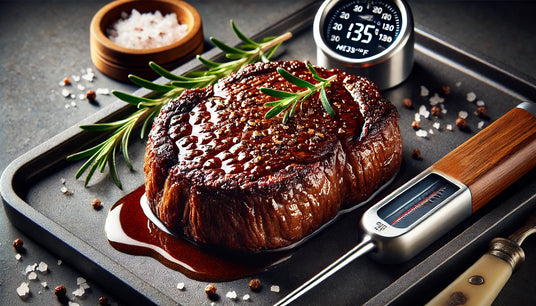
PRUEBE EL DORMITORIO INVERSO
EL BISTEC PERFECTO
El método de sellado inverso: resultados perfectamente cocinados y dignos de un asador
El método de sellado inverso es una técnica confiable para lograr filetes deliciosos con un sellado impecable y un interior tierno y jugoso. Es el secreto para lograr resultados de calidad de restaurante de carne en casa. Este método comienza con un sellado intenso a una temperatura de 1000 °F, lo que conserva el sabor y crea una corteza rica y caramelizada. Después de sellar, mueva el filete a la placa de cocción plana para aumentar suavemente su temperatura interna hasta el punto de cocción deseado.
Para obtener un filete a punto medio perfecto a 135 °F, retírelo de la parrilla a 120 °F, ya que seguirá cocinándose mientras reposa. Este equilibrio entre sellado a fuego alto y cocción controlada garantiza una experiencia gastronómica incomparable: cada bocado rebosa de sabor y jugosidad. El sellado inverso resalta lo mejor de los filetes y redefine lo que es posible en su parrilla.
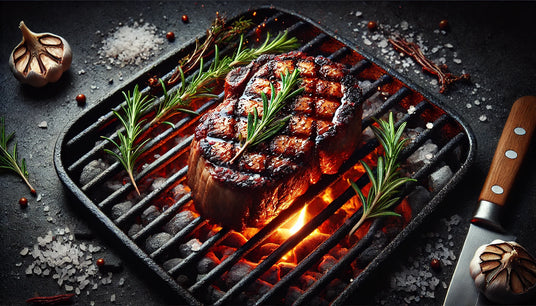
SOUS-VIDE PRIMERO,
PARRILLA SEGUNDA
Eleve su nivel de calidad: combine la precisión del sous-vide con un sellado perfecto en la parrilla de carbón
Para lograr una ternura y una precisión incomparables, muchos de los mejores asadores recurren a la técnica sous-vide. Este método consiste en cocinar el filete en una bolsa sellada al vacío a una temperatura controlada con precisión, como 131 °F durante cuatro horas, para lograr una suavidad y ternura inigualables.
Para realzar el sabor, combine la cocción al vacío con el poder ahumado y de alta temperatura de una parrilla de carbón. Después de cocinar al vacío, seque el filete con palmaditas para garantizar un dorado perfecto, un paso crucial ya que la humedad impide la caramelización que forma la corteza perfecta.
Utilice una parrilla calentada a 800 °F o más para lograr un dorado perfecto. Exponga el filete a calor intenso brevemente de ambos lados para lograr un exterior carbonizado y sabroso, mientras se conserva el interior suculento y a punto medio. Esta fusión de ternura al vacío y sabor a la brasa crea una experiencia de calidad de restaurante de carnes que no tiene comparación.
Si domina esta combinación y se asegura de que la superficie esté seca antes de dorarla, aprovechará todo el potencial de su filete: jugoso, tierno y repleto de sabor.
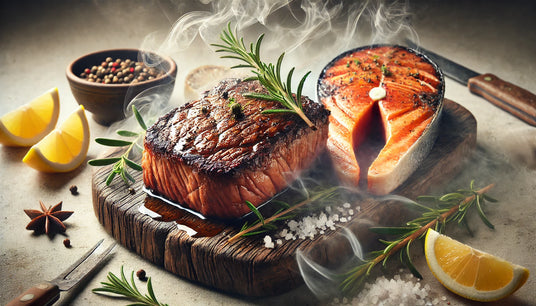
SMOKE FLAVOR AS SEASONING
Descubra la magia del sabor ahumado con la parrilla de carbón
El humo aporta un sabor distintivo que es imposible de reproducir, y los alimentos porosos como el pan absorben rápidamente sus ricos aromas. Asar a la parrilla con carbón ofrece una oportunidad única de experimentar con variedades de madera, cada una de las cuales aporta su propio perfil de humo distintivo. El nogal americano ofrece sabores intensos y audaces, perfectos para los filetes, mientras que las notas sutiles del aliso realzan el sabor del salmón. Estas diferencias surgen de los compuestos naturales de la madera, como la lignina, que contribuyen a su carácter único.
Si bien el carbón se quema de manera limpia y produce un humo mínimo, la verdadera magia del sabor ocurre cuando se agrega madera o trozos de madera. Los aceites y los jugos que caen sobre las brasas pueden producir sabores no deseados, por lo que la adición de madera de calidad es esencial para lograr el perfil ahumado deseado. Las parrillas a gas tienen dificultades para reproducir esto, ya que las cajas de humo y las tapas sueltas no atrapan el humo de manera efectiva.
La parrilla Arteflame se destaca por crear sabores ahumados perfectamente equilibrados. Su flujo de aire diseñado garantiza una combustión casi completa y, al mismo tiempo, produce el humo justo para darle sabor a su comida. Para lograr un ahumado mejorado, simplemente agregue madera fresca al fuego o use la rejilla elevadora opcional para colocar su comida directamente en el flujo de humo. Esta versatilidad le permite lograr el sabor ahumado perfecto en todo momento, elevando su experiencia de asado a niveles gourmet.
